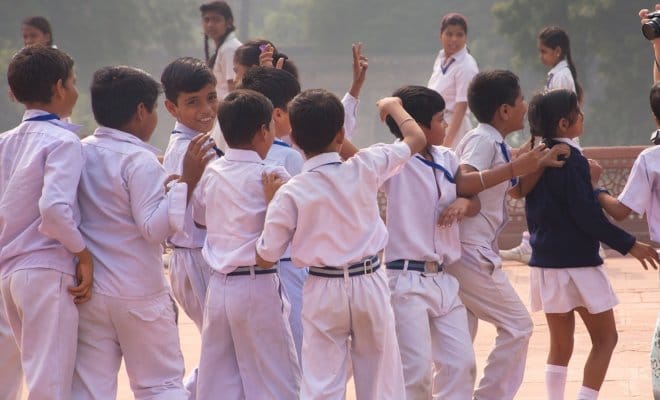Health
Two-Thirds of Indian Workers Earn Less Due to Childhood Stunting: Report

Representational Image
Photo: Bigstock
Stunting in childhood has negative effects at various levels, which result in lower income later in life, a World Bank study shows.
Around two-thirds of the working population in India earns 13 percent less due to adverse outcomes of childhood stunting that persist in adulthood, according to a recent World Bank report.
India has the third highest number of workers (66 percent) who were stunted as children, behind Bangladesh and Afghanistan, where 73 percent and 67 percent, respectively, of the worker population showed stunted growth, the report said.
Stunting in childhood implies that the child is excessively short for his/her age. One may see parents worrying about their child’s height, keeping social pressures such as appearance in mind, but this report also shows the cognitive, educational and economical effects of short stature.
Children, who face stunted growth, come across adverse outcomes later in life, the report pointed out. They suffer from impaired brain development, which leads to lower cognitive and socio-emotional skills and lower levels of educational attainment. Lack of these skills has resulted in 66 percent of the Indian workforce earning less than it would otherwise have.
The World Bank report, released in August 2018, is based on the analysis of total 140 countries, and shows different rates of average mean reduction in incomes for different regions. People of India, one of the fastest growing economies in the world, lost more income on average than those from Sub-Saharan African countries, IndiaSpend reported, based on an analysis of the World Bank report.
The mean reduction in income for South Asians was 10 percent, compared to North America’s 2 percent. For countries in Sub-Saharan Africa, and East Asia and Pacific, the rate was 9 and 7 percent, respectively.
The proportion of stunted persons among the worker population, however, does not reflect the number of children currently facing stunted growth, IndiaSpend reported.
In 26 years to 2014, the percentage of stunted Indian children under five dropped to 38.7 percent from 62.7 percent in 1988, marking a decline of 24 percent, the publication said, citing child malnutrition estimates from stunting from Unicef, WHO and World Bank.
Stunting is caused by a variety of factors, including the socio-economic milieu of a country, including the treatment of women and children in the society.
“Many parts of sub-Saharan Africa fare much better on many determinants, especially women’s status and sanitation,” Purnima Menon, senior research fellow at the International Food Policy Research Institute, told IndiaSpend.
“It isn’t just about the state of the economic development–it’s about how girls and women, who will become future mothers, are treated by society,” she added.
Stunting can be avoided if the child (in-utero and after birth) has adequate nutrient intake and is not exposed to bouts of disease that weaken the body, according to the World Bank report. Programs that increase the flow of nutrients and reduce exposure to disease can reduce the risk of stunting, and potentially eliminate it altogether, it said.



